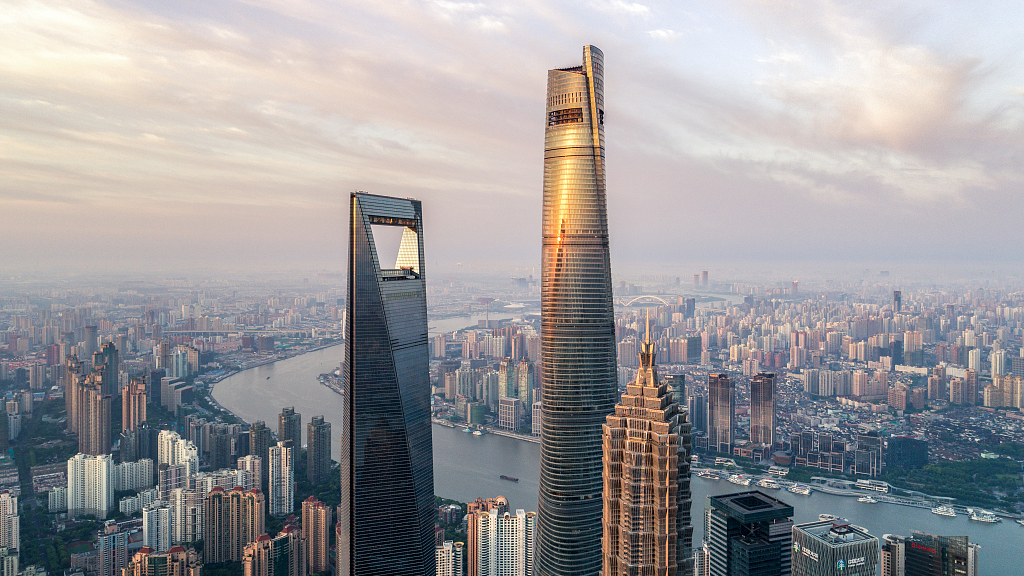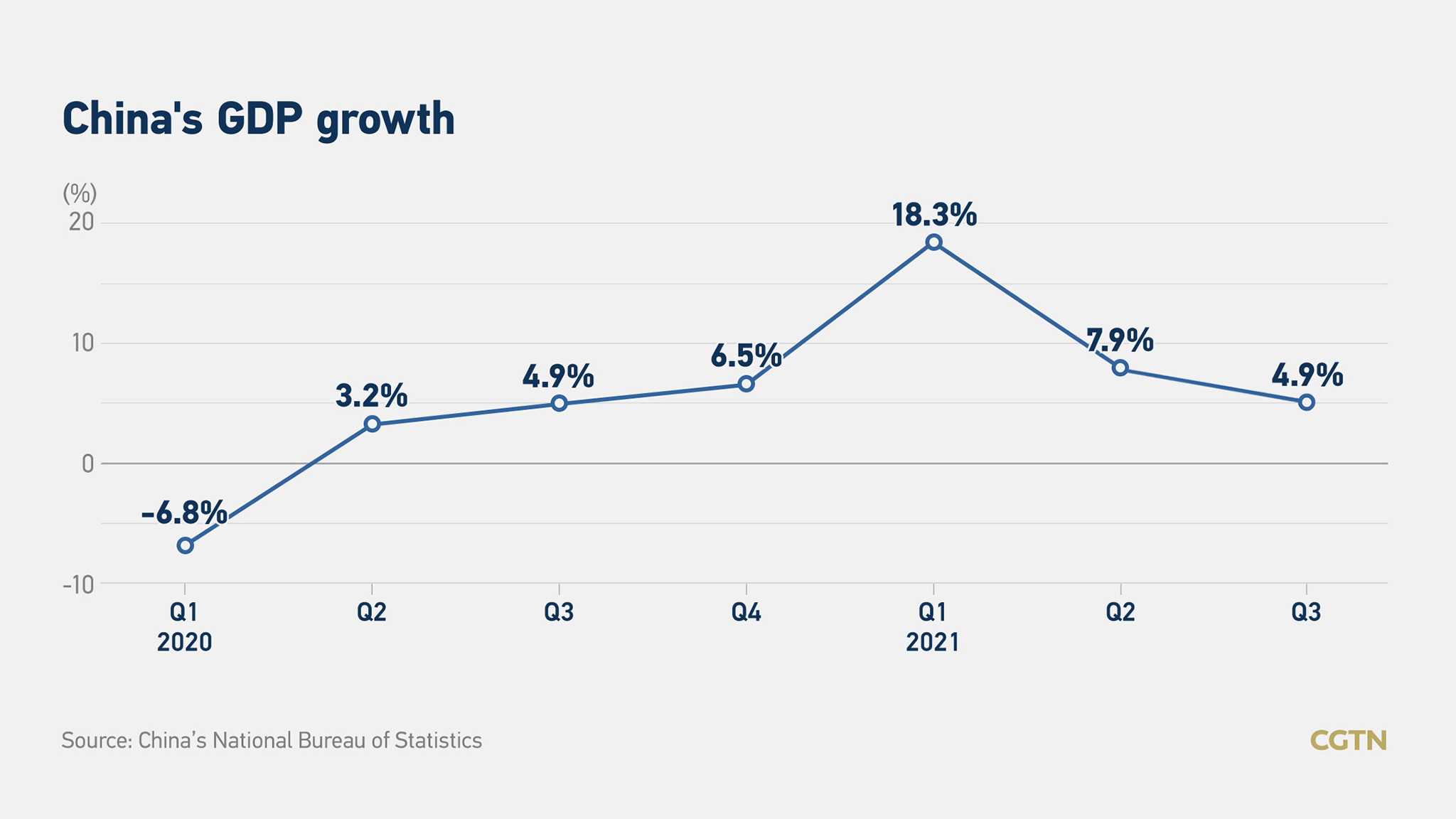
A view of Lujiazui Financial Area, Shanghai, China. /CFP
A view of Lujiazui Financial Area, Shanghai, China. /CFP
The year 2021 was at the historical convergence of China's "Two Centenary Goals." After decades of endeavor, China completed the first centenary goal of building a moderately prosperous society in all respects, President Xi Jinping announced at the grand gathering to celebrate the 100th anniversary of the founding of the Communist Party of China on July 1.
Now the country has set out on a new journey embarking on the second centenary goal of fully building a modern socialist country.
Despite COVID-19 still haunting, China has maintained a leading position in the world, in economic development and epidemic control, with progress made in industrial chain resilience, reform and opening-up, and people's livelihood this year.
Economists believed China would likely post its second year of positive growth in 2021, after being the only major economy in the world that pocketed positive economic growth in the previous year.
The World Bank projected that China's economy will expand by 8 percent this year.
Hang Seng Bank China forecasted China's full-year growth rate of 8.2 percent in early December, stressing upward factors such as strong exports and accelerating investment in manufacturing were favorable.
"These positive factors will not only be maintained at the end of this year, but will continue into next year," Wang Dan, chief economist of the bank said in a note.
Strong overseas demand has elevated China's exports and industrial profits. "China's exports have been growing at a double-digit rate since the COVID-19 and are currently at a historical high, especially exports to the U.S. and European markets. The world will continue to rely on China for production as long as the outbreak continues," Wang told CGTN.
However, the trajectory of China's economy is not unobstructed. China's economic growth rate has been from high to low in the first three quarters, reflecting an increasing downward pressure facing the country's economy.

The annual Central Economic Work Conference in December, cautioned that China's economic development is facing pressure from demand contraction, supply shock and weakening expectations, and the external environment is becoming increasingly complicated, grim and uncertain.
"We must face the difficulties squarely while staying confident," said a statement released after the meeting, citing China's strong economic resilience and unchanged fundamentals underpin long-term growth.
Economic work next year should prioritize stability while pursuing progress, the meeting concluded.
Common Prosperity
For building a modern socialist China, eliminating extreme poverty was necessary, but it was not sufficient. Gaps between regions, urban and rural areas, and in people's income, are also problems to be dealt with for a long-run prosperity.
And this is the point where China began striving to attain common prosperity, which refers to affluence shared by everyone both in material and cultural terms, to further improve people's well-being. China has been increasingly focused on striving for "common prosperity," namely affluence shared by everyone, through a systematic portfolio of policies, such as tax reforms and encouraging philanthropy.
Common prosperity is an essential requirement of socialism and a key feature of Chinese-style modernization, Xi said, at the 10th meeting of the Central Committee on Finance and Economics in late August.
For economists, much of China's major economic tasks for 2022 will mirror the core national agenda of common prosperity.
Read more: How will China achieve common prosperity? – Make 'cake' bigger first
De-risking and model shifting
In Wang's view. China has successfully contained financial risks in the housing market and local government debt this year.
"Central authorities have sent a clear signal on the long-term nature of such policies. The economic model is in transition from pursuing growth to high-quality development," she said.
Despite the outperformance of China's economy for many years, its system needs to be adjusted to resolve and correct several imbalances, said Jeremy Stevens, chief China Economist of Standard Bank.
In 2020, China's top leaders proposed a new development paradigm dubbed "dual circulation" to anchor the future development of the nation's economy. Under such a paradigm, China's economy posits to be dominated by domestic economic circulation and is facilitated by circulation between China and the rest of the world.
Read more: Why does dual-circulation development pattern matter to China's economy?
"Already by June 2020 Beijing had made it clear that they were shifting back to focusing on medium-term policy objectives, and this year they have gotten back to de-risking the financial system, for example. This pivot towards looking beyond the cyclical path is critical to ongoing economic success," he told CGTN.
"The end game is that consumption is becoming a larger share of GDP ... Common prosperity is a recognition that consumption must drive growth. To that end, it is not enough for Chinese households simply to consume with a greater share of their incomes, but incomes need to be bigger, wealth needs to be more widely shared, and people need to be able to spend a greater share of that income on discretionary items," he added.

